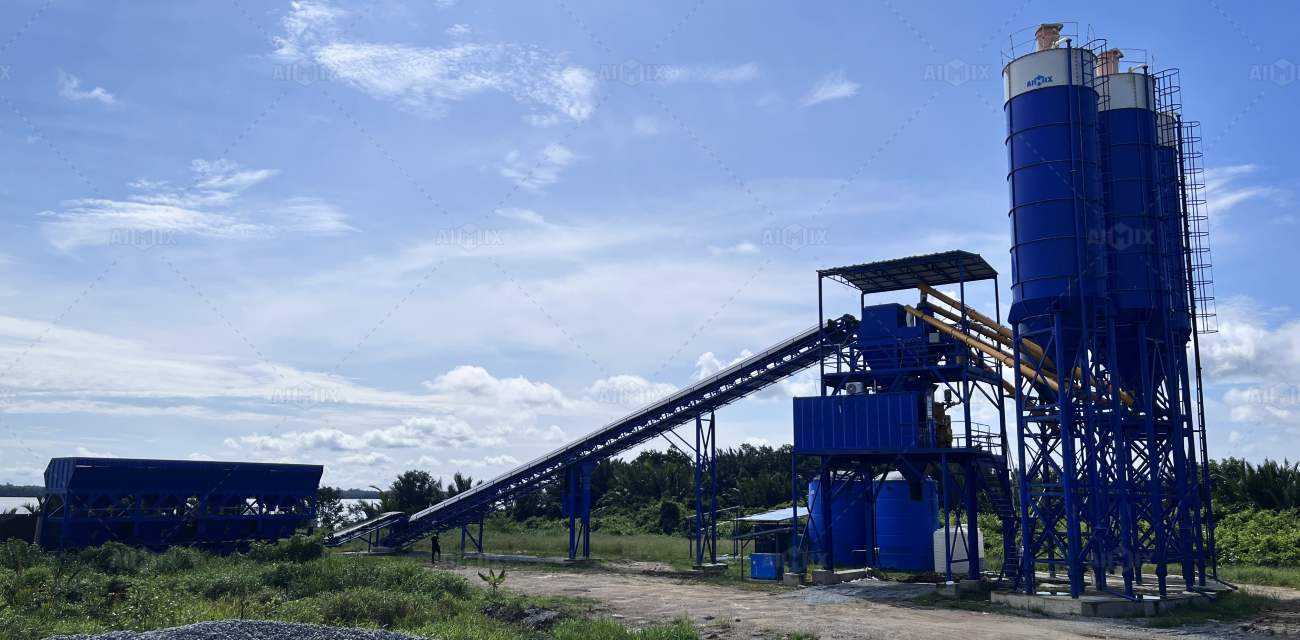The construction industry operates in a dynamic and interconnected global market. One of the most crucial aspects influencing the cost of ready mix concrete plants (RMC plants) is the price volatility of raw materials. Whether you're a developer, contractor, or RMC plant company, understanding how these raw material fluctuations impact plant costs is key to controlling your expenses and maintaining profitability.
Raw materials like cement, aggregates (sand, gravel), water, and chemicals are the building blocks of concrete. However, their prices are subject to various global and local economic factors. These price changes have a significant bearing on the ready mix concrete plant cost, directly impacting plant owners, project budgets, and end consumers.

The Influence of Cement Prices on RMC Plant Costs
Cement is arguably the most essential ingredient in ready mix concrete. It's a primary factor in determining the cost of ready mix concrete plant operations. Cement prices are highly sensitive to a range of factors, including:
Global Supply and Demand: Cement is produced in large quantities worldwide, but fluctuations in global supply can lead to price changes. For example, countries facing production issues or raw material shortages (such as limestone or coal) can see significant price hikes.
Energy Costs: Cement production is energy-intensive. Increases in the cost of electricity or fuel (such as coal) have a direct impact on the cost of manufacturing cement. As RMC plant companies use vast amounts of cement, any price increase cascades through to the overall cost of producing concrete.
Logistics and Transportation: Shipping and transporting cement from factories to the RMC plant adds considerable cost. With the rise in fuel prices and logistics expenses, the final price of cement for mixing plants may increase, further impacting the plant’s operational cost.
For RMC plant companies, the price of cement makes up a significant portion of their overall expenses. Therefore, fluctuations in cement pricing are keenly monitored when estimating operational costs or adjusting pricing for customers.
Aggregates: The Impact of Global Raw Material Shortages
Aggregates such as sand, gravel, and crushed stone form the bulk of concrete. While cement gives concrete its binding properties, aggregates provide strength and stability. The cost of aggregates is influenced by:
Local Availability: Aggregates are often sourced from quarries and mines, so their price can vary greatly depending on regional availability. In some countries, shortages or bans on certain aggregates can result in increased prices. For instance, some regions are experiencing limited access to quality sand, driving up prices.
Logistics and Transportation: Similar to cement, aggregates are bulky and expensive to transport. Therefore, transportation costs significantly affect aggregate prices. Fluctuations in fuel prices, international trade policies, and transportation infrastructure can all increase the price of aggregates.
Environmental Regulations: As environmental concerns grow, governments around the world are implementing stricter regulations on mining and quarrying operations. These regulations can restrict supply, leading to higher prices for aggregates used in concrete production.
For an RMC plant company, the cost of sourcing and transporting aggregates is a major consideration. Given the considerable volume of aggregates needed to produce concrete, even small price changes in raw materials can add up quickly and increase the overall cost of ready mix concrete plant operations.

Global Steel and Chemical Price Fluctuations
While cement and aggregates are the primary ingredients in concrete, certain chemical additives and steel reinforcements also influence the price.
Steel Reinforcement: Steel is commonly used in ready mix concrete for reinforcement, especially in structural projects. The price of steel is closely tied to the global demand for construction and industrial goods. Steel prices have seen considerable volatility in recent years due to supply chain disruptions, tariffs, and the global demand for infrastructure projects. For an RMC plant company, this means the cost of producing concrete with steel reinforcement may fluctuate depending on market conditions.
Chemical Additives: Chemical admixtures—such as retarders, accelerators, and plasticizers—are used to improve the properties of concrete. The price of these chemicals can vary based on the global petrochemical industry and fluctuations in oil prices. The costs for producing and transporting these chemicals can thus significantly affect the overall cost of ready mix concrete plant operations.
Supply Chain Disruptions and Global Logistics
In recent years, the construction industry has faced numerous supply chain disruptions, particularly during the COVID-19 pandemic. Such disruptions can cause delays in the procurement of raw materials like cement, aggregates, and chemicals. These delays, in turn, contribute to rising prices for RMC plant companies.
For example, if an RMC plant company relies on specific suppliers for their raw materials, any disruptions in the supply chain—whether due to geopolitical tensions, labor shortages, or logistics issues—can increase the cost of raw materials or delay production, leading to higher operating costs.
Strategies for Managing Raw Material Cost Fluctuations
To mitigate the impact of rising raw material prices, RMC plant companies can implement several strategies:
Diversify Suppliers: By sourcing materials from multiple suppliers or regions, companies can reduce their dependence on any single source. This approach can help cushion against regional price fluctuations or supply disruptions.
Invest in Automation: Automating parts of the mixing process can increase efficiency and reduce labor costs, offsetting some of the higher raw material prices.
Long-Term Contracts: Entering into long-term agreements with suppliers can help lock in prices, providing stability in the face of market volatility.
Optimize Material Use: By investing in better batch planning and mix design optimization, RMC plant companies can reduce the wastage of raw materials, lowering the overall cost of production.

Conclusion
Global raw material prices play a significant role in determining the cost of ready mix concrete plants. Whether it’s cement, aggregates, steel reinforcement, or chemicals, price fluctuations in these materials are closely linked to global market trends, logistical challenges, and environmental regulations. RMC plant companies must stay ahead of these changes by diversifying suppliers, optimizing operations, and investing in technology to protect themselves from raw material cost increases. With strategic planning, it’s possible to minimize the impact of these fluctuations and continue to deliver quality concrete at competitive prices.





